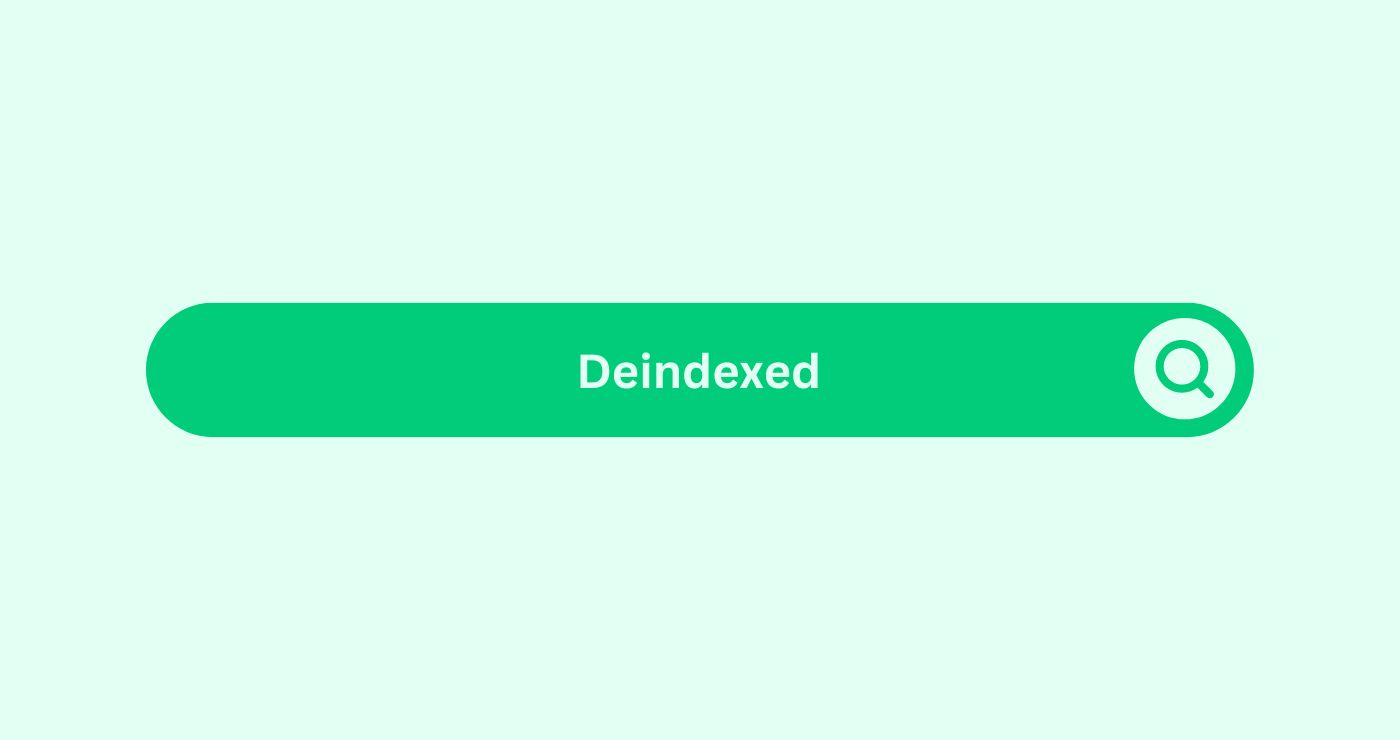Definition
Deindexing in SEO happens when search engines remove a webpage or an entire website from their index, making it invisible in search results. This process can drastically reduce trafficDefinition In the context of SEO (Search Engine Optimisation... and impact online visibility. Understanding its causes, effects, and solutions helps site owners maintain search engine rankings.
Causes of Deindexing
Search engines deindex sites for various reasons, including policy violations, technical errors, and security risks. Websites that use spammy tacticsDefinition Spammy Tactics in the SEO realm refer to deceptiv... such as keyword stuffingDefinition Keyword stuffing is the unethical practice of exc..., cloakingDefinition Cloaking deceives search engines by showing diffe..., or buying backlinksWhat are backlinks in the context of SEO? Backlinks, also kn... often face deindexing. Duplicate contentDefinition Duplicate content in the SEO space refers to iden..., scraped material, and thin pages with little value also increase the risk.
Technical misconfigurations, such as incorrect use of the robots.txtDefinition Search engine crawlers use directives from Robots... file or “noindex” meta tagsDefinition Meta tags are crucial in social media marketing t..., can unintentionally block search engines. Frequent serverDefinition A Server in the SEO space refers to a computer sy... errors, slow loading speeds, or excessive downtime may also cause removal from search results.
Security threats, including malware infections and phishing attempts, prompt search engines to deindex affected sites to protect users. If a website gets hacked and spreads harmful content, search engines will remove it until the issue is resolved.
How You Can Use
You operate an e-commerce website that has experienced a sudden drop in organic trafficDefinition In the context of SEO (Search Engine Optimisation.... Address problems, meet requirements, remove pages from indexingDefinition Indexing in content marketing involves search eng..., and increase organic trafficDefinition In the context of SEO (Search Engine Optimisation.... Here’s how you can address and resolve this issue:
- Identify the Cause: Check Google Search ConsoleDefinition Google Search Console is a free web service from ... for any manual actions or penalties that may have been applied. Check for technical issues like broken links, serverDefinition A Server in the SEO space refers to a computer sy... errors, or bad redirectsDefinition Effective redirects are crucial for SEO firms to ....
- Fix the Issues: If there are manual penalties, follow the guidelines provided by Google to rectify the issues. This could involve removing low-quality content, fixing security vulnerabilities, or addressing spammy practices.
- Submit for Reconsideration: After fixing the issues, send a request through Search Console to Google, detailing your compliance steps.
- Regular Monitoring: Monitor site performance with tools like Google Search ConsoleDefinition Google Search Console is a free web service from ... to prevent deindexing.
Key Takeaways
- Loss of Visibility: Deindexed pages do not appear in search engine results, leading to a significant drop in organic trafficDefinition In the context of SEO (Search Engine Optimisation....
- Causes Vary: Guideline violations, technical errors, or intentional removal can deindex pages.
- Identification key. Use tools like Google Search ConsoleDefinition Google Search Console is a free web service from ... to identify and understand why a page was deindexed.
- Resolution Process: Submit a reconsideration request to deindex the pages.
- Preventive Measures: Regular site monitoring and adherence to SEO best practices can help prevent deindexing.
FAQs
What does it mean to be deindexed?
Being deindexed means a webpage or website has been removed from a search engine’s index, making it invisible in search results.
Why would a page be deindexed?
Pages can be deindexed due to violations of search engine guidelines, technical issues, or intentional actions by the website owner.
How can I check if my page is deindexed?
Use tools like Google Search ConsoleDefinition Google Search Console is a free web service from ... to see if any pages have been deindexed and to identify possible reasons.
What should I do if my page is deindexed?
Identify the cause of deindexing, fix any issues, and submit a reconsideration request to the search engine.
How long does it take to get reindexed?
The time to get reindexed can vary, but it generally depends on how quickly the issues are resolved and how fast the search engine processes your reconsideration request.
Can intentional deindexing be reversed?
Yes, if you intentionally deindexed a page, you can reverse it by updating your robots.txtDefinition Search engine crawlers use directives from Robots... file or removing noindex tags.
What are common reasons for deindexing?
Common reasons include duplicate contentDefinition Duplicate content in the SEO space refers to iden..., spammy practices, serverDefinition A Server in the SEO space refers to a computer sy... errors, security issues, and violations of search engine guidelines.
How does deindexing affect SEO?
Deindexing removes a page from search results, leading to a loss of organic trafficDefinition In the context of SEO (Search Engine Optimisation... and potentially impacting overall site performance.
Can deindexed pages still be accessed directly?
Yes, deindexed pages can still be accessed directly via their URL but will not appear in search engine results.
What preventive measures can I take to avoid deindexing?
Regularly monitor your site’s health, adhere to SEO best practices, avoid guideline violations, and use tools like Google Search ConsoleDefinition Google Search Console is a free web service from ... for ongoing compliance.




